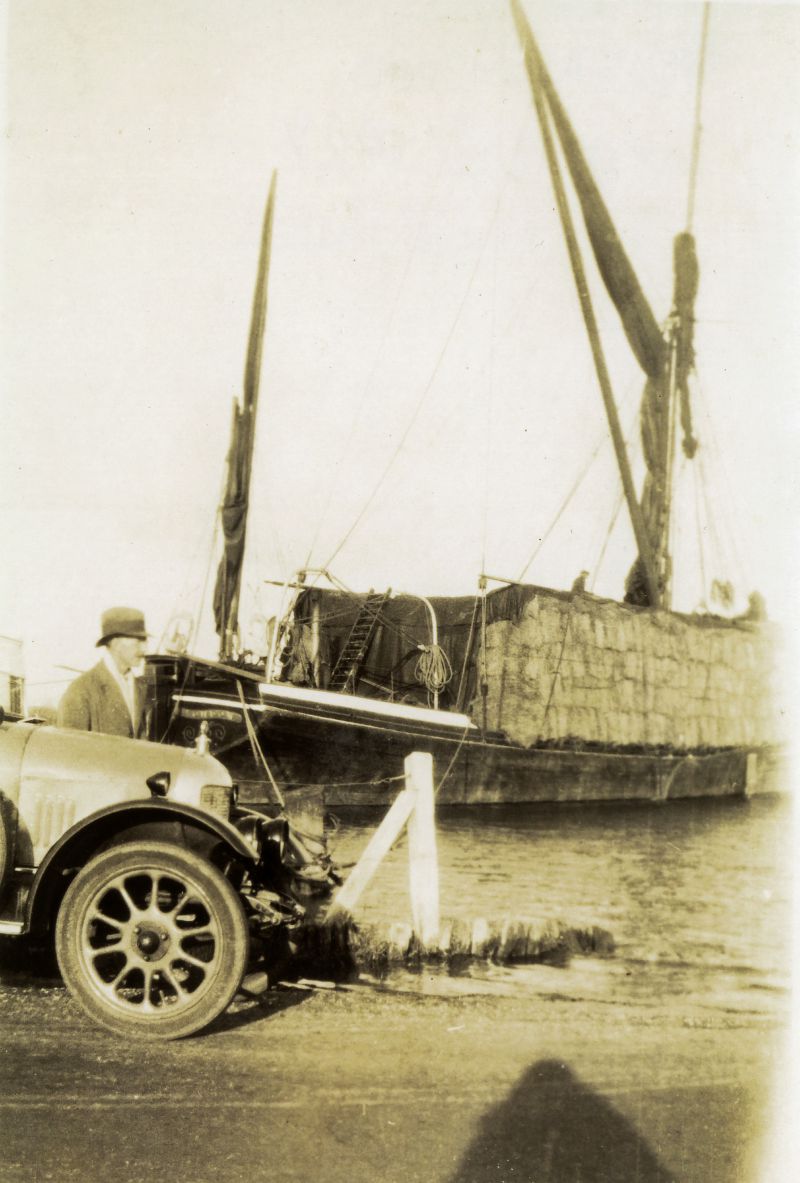Recently a photo was posted on a social media website showing a Berry's coach splashing through the
Strood. It raised some questions, not about the coach but the two sailing barges in the background. What were they
doing there?
Few people realise that the Strood was a busy port at one time. The remains of Strood Wharf can still be seen
- on the Pyefleet side of the Strood at the mainland end, but barges would load anywhere with enough water
and a good bottom.
Farms, particularly those in the Peldon area, shipped out their straw, hay and other produce, and brought in manure
for the fields. Much of this trade was with London for the many horses at work on the streets. Stone was brought in
for the roads and to repair the sea walls. Bricks and timber were brought in for local builders. Households were
supplied with coal.
Henry Eagle was the farmer at Pete Hall, but Kelly's 1878 Directory also lists him as a coal, chalk and manure
merchant at Strood Wharf. There was a lime kiln nearby, on land that was part of Pete Hall.
After WW1, Essex County Council had a proposal to improve transport, by reviving the scheme for a railway to Mersea,
and by building a new wharf on the west side of the Strood. But the writing was on the wall. The many ex-Army lorries
coming back from WW1 would start to change transport. Things move slowly, and the last cargoes - of stone for sea
wall repairs - were not until 1946.
I have selected a few photos from my collection of barges there with various cargoes.

The wharf at the Strood - view looking towards Colchester before 1930.
There is a pile of stone on the wharf.

The Colchester barge THE BROWNIE with a huge freight of softwood for builder Horace Martin.

The Bradwell barge NELLIE PARKER with pressed hay for the London horses, keeps company with a bullnosed Morris
in 1927

Bradwell barge VERONICA discharging tarmacadam for Essex County Council. c 1930. Watercolour RG
Published in Mersea Life June 2023 |